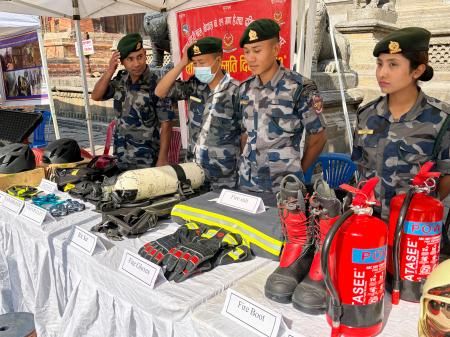Nepal: Post-Earthquake Reconstruction – A Decade of Progress and Challenges
Nepal's 2015 earthquake, a devastating event registering a magnitude of 7.8, left an indelible mark on the nation. The tremors claimed thousands of lives and rendered millions homeless, leaving behind a trail of destruction that extended far beyond the immediate aftermath. A decade later, the journey of post-earthquake reconstruction remains a complex narrative of progress, setbacks, and ongoing challenges. This article delves into the key aspects of Nepal's recovery, examining successes, hurdles, and the path forward.
The Scale of the Devastation
The 2015 Gorkha earthquake and its subsequent aftershocks caused widespread damage, impacting critical infrastructure, including:
- Housing: Hundreds of thousands of homes were destroyed or severely damaged, leaving a massive housing shortage.
- Cultural Heritage: Ancient temples, stupas, and other historically significant structures suffered irreparable damage, leading to significant cultural losses. The iconic Dharahara Tower, for example, required extensive reconstruction.
- Infrastructure: Roads, bridges, and other vital infrastructure were severely compromised, hindering relief efforts and post-disaster recovery.
- Economic Impact: The earthquake dealt a crippling blow to Nepal's economy, disrupting tourism, agriculture, and other key sectors.
Challenges in Reconstruction
The reconstruction process has been fraught with challenges, including:
- Bureaucratic Hurdles: Navigating complex bureaucratic procedures and securing permits for rebuilding proved incredibly difficult for many.
- Funding Gaps: While significant international aid poured in, funding often fell short of the immense needs, leading to delays in crucial projects.
- Geographical Constraints: The mountainous terrain of Nepal hampered access to remote areas, complicating relief efforts and reconstruction initiatives.
- Political Instability: Political instability and shifting priorities further complicated the already challenging recovery process.
- Corruption: Allegations of corruption and mismanagement of funds further slowed progress and eroded public trust.
Progress Made: A Decade of Resilience
Despite the obstacles, Nepal has made considerable progress in various areas:
- Housing Reconstruction: A significant number of homes have been rebuilt, albeit not without delays and ongoing challenges in remote regions. The government's housing grant program played a vital role, though its effectiveness has been debated.
- Infrastructure Development: Progress has been made in repairing and rebuilding roads, bridges, and other infrastructure, improving connectivity across the country.
- Cultural Heritage Preservation: Many historically significant structures have been restored or are undergoing restoration, a testament to Nepal's commitment to preserving its cultural heritage. International collaborations have been key to these efforts. The reconstruction of UNESCO World Heritage sites has been a particular focus.
- Community Engagement: Increased community participation in the reconstruction efforts has empowered local populations and fostered a sense of ownership.
The Road Ahead: Sustainable Reconstruction and Development
Nepal's post-earthquake reconstruction journey continues. Key areas demanding further attention include:
- Addressing Housing Shortages: Ensuring that all those affected by the earthquake have access to safe and durable housing remains a crucial priority.
- Promoting Sustainable Reconstruction: Adopting disaster-resilient building techniques and promoting sustainable development practices are essential for long-term resilience.
- Strengthening Institutional Capacity: Improving governance, transparency, and accountability in managing reconstruction funds is critical to prevent future setbacks.
- Investing in Early Warning Systems: Implementing robust early warning systems can significantly reduce the impact of future disasters.
Conclusion: Building Back Better
The post-earthquake reconstruction in Nepal stands as a testament to the resilience of its people and the unwavering support of the international community. While significant progress has been made, the journey toward a fully recovered Nepal necessitates a sustained commitment to addressing the lingering challenges and building back better, focusing on sustainability, resilience, and good governance. The lessons learned from this experience will undoubtedly shape Nepal's future disaster preparedness and recovery strategies. Further research and ongoing monitoring are crucial to ensure the long-term success of these efforts.
Keywords: Nepal earthquake, Nepal reconstruction, post-earthquake recovery, Nepal housing, Nepal infrastructure, disaster relief, sustainable development, Nepal tourism, cultural heritage preservation, Gorkha earthquake, Nepal aid
(Note: This article can be further optimized by adding relevant internal links to other articles on your website about Nepal, disaster relief, sustainable development, etc. External links to reputable sources, such as government reports, UN agencies, and NGOs working in Nepal, should also be included to enhance credibility.)
